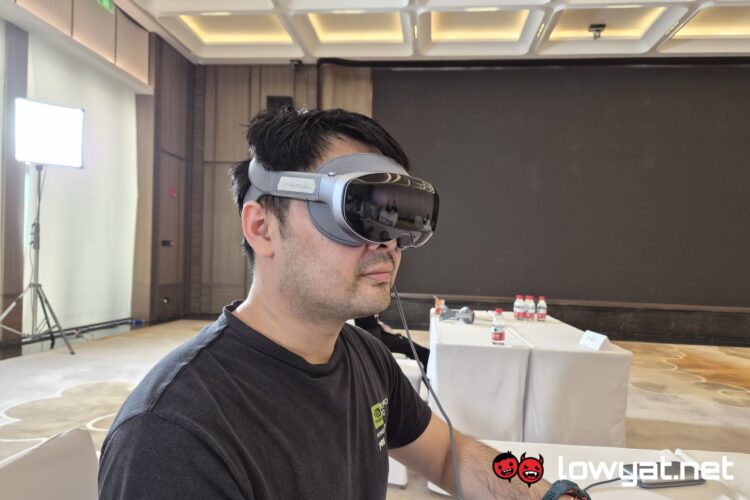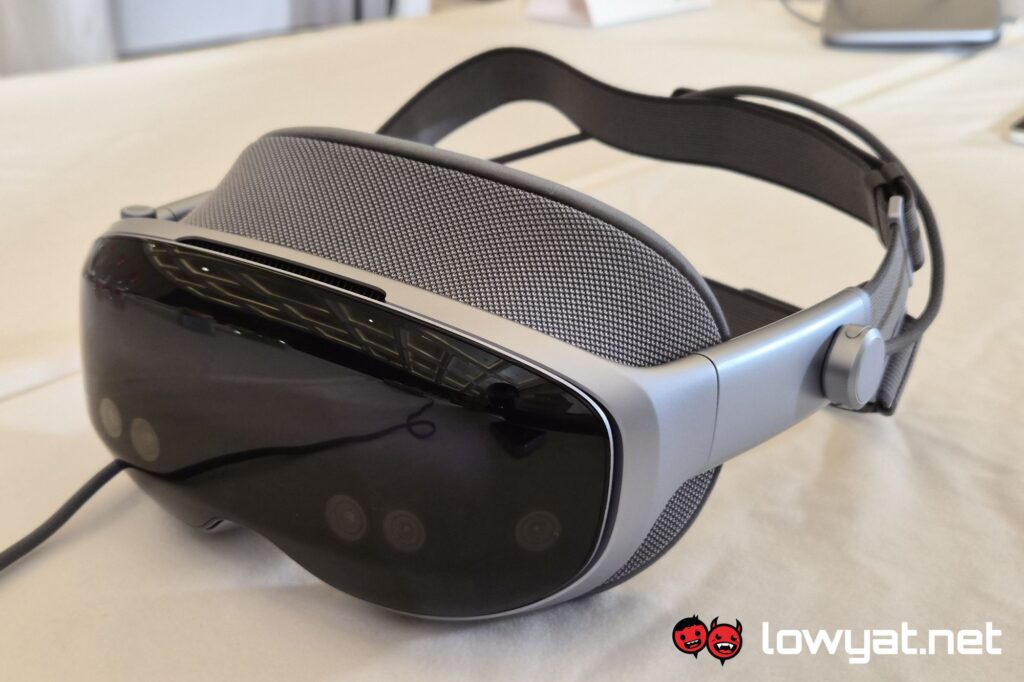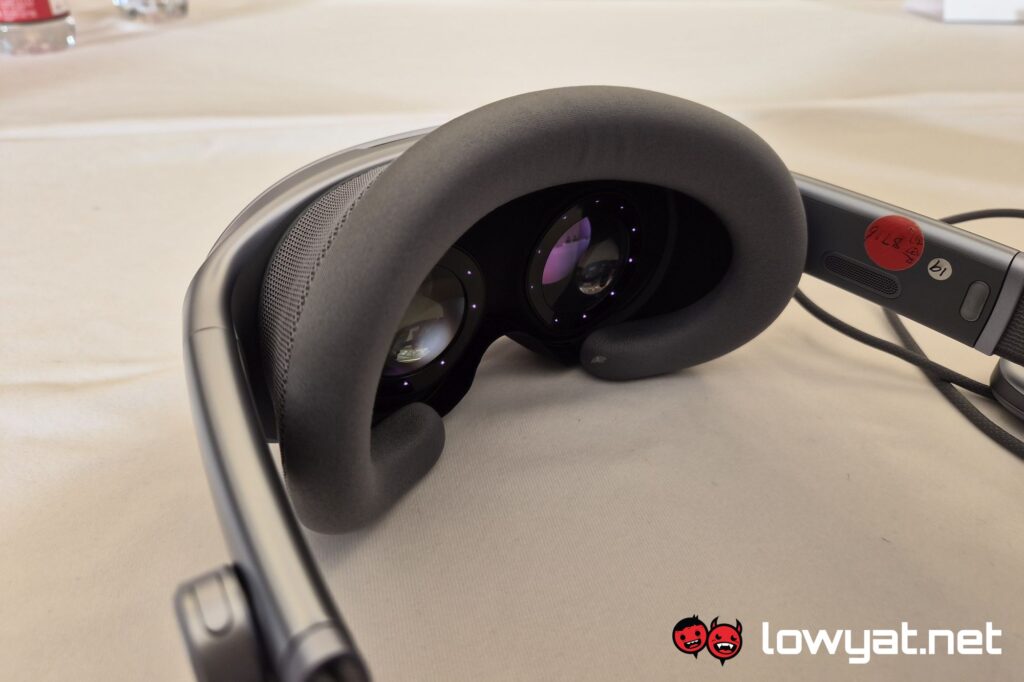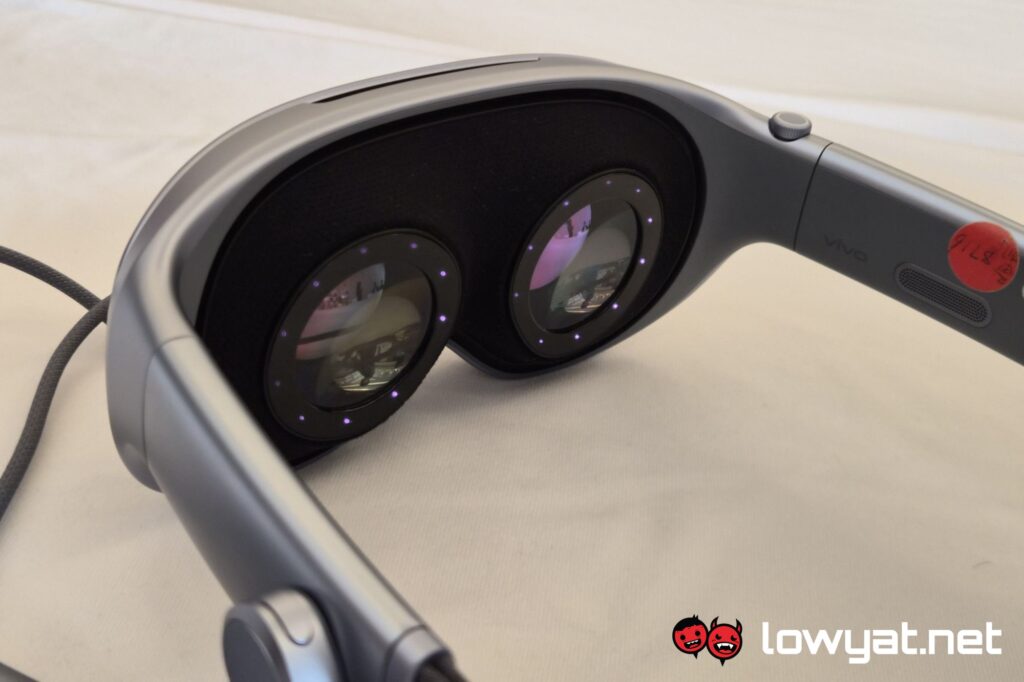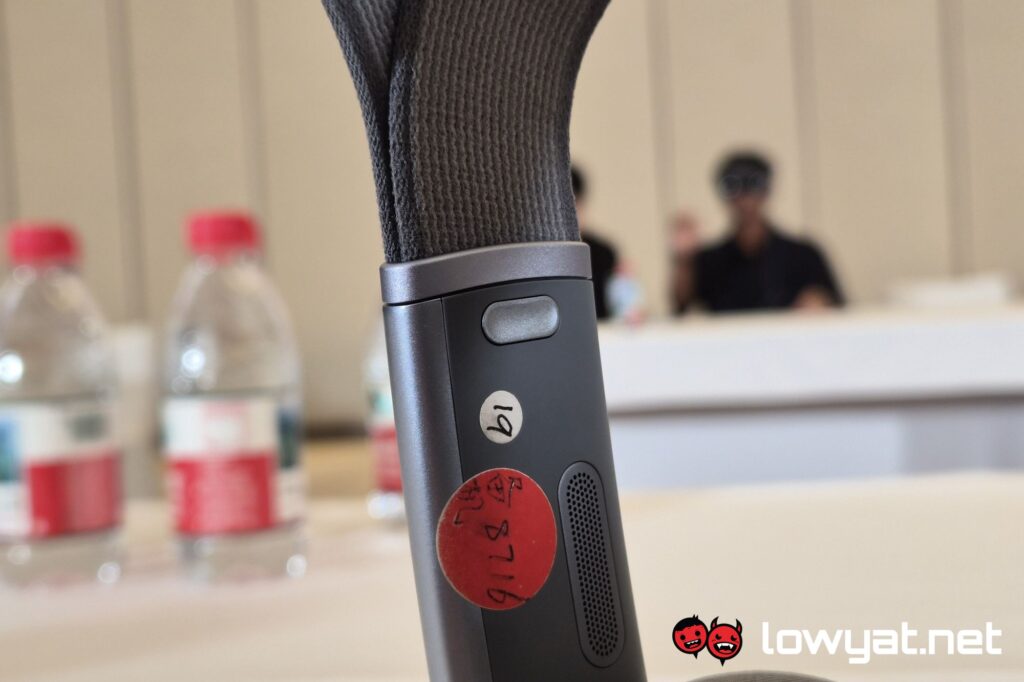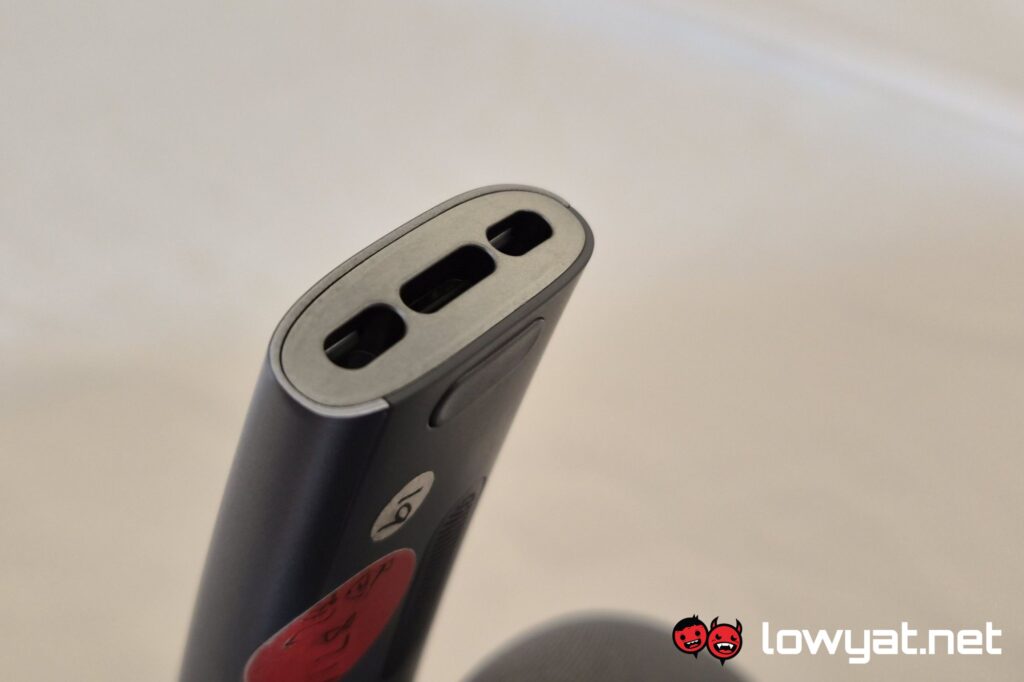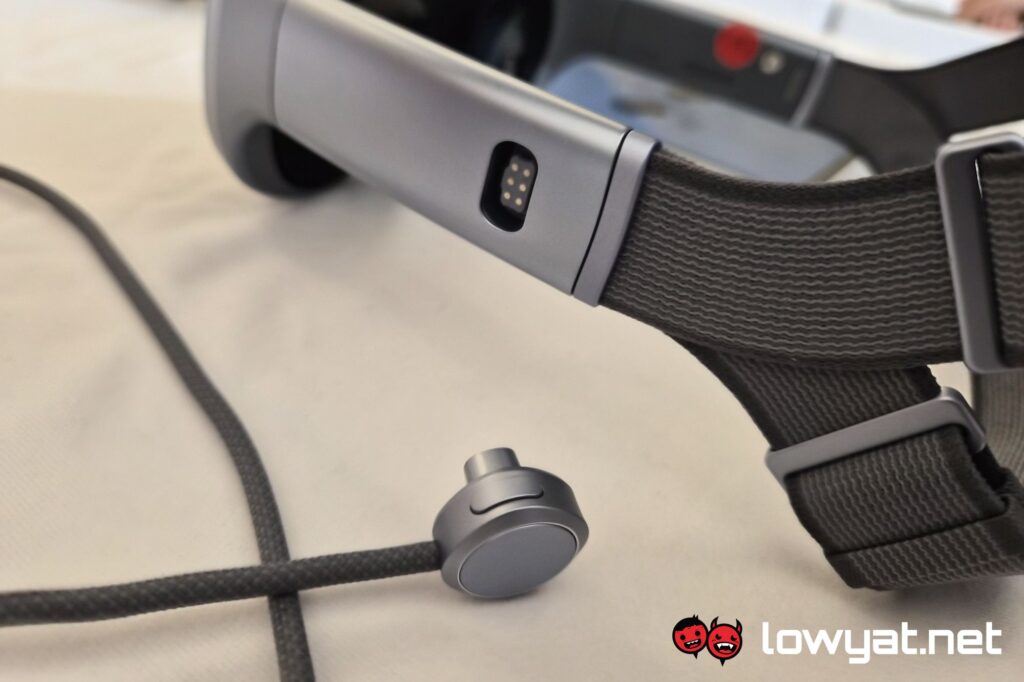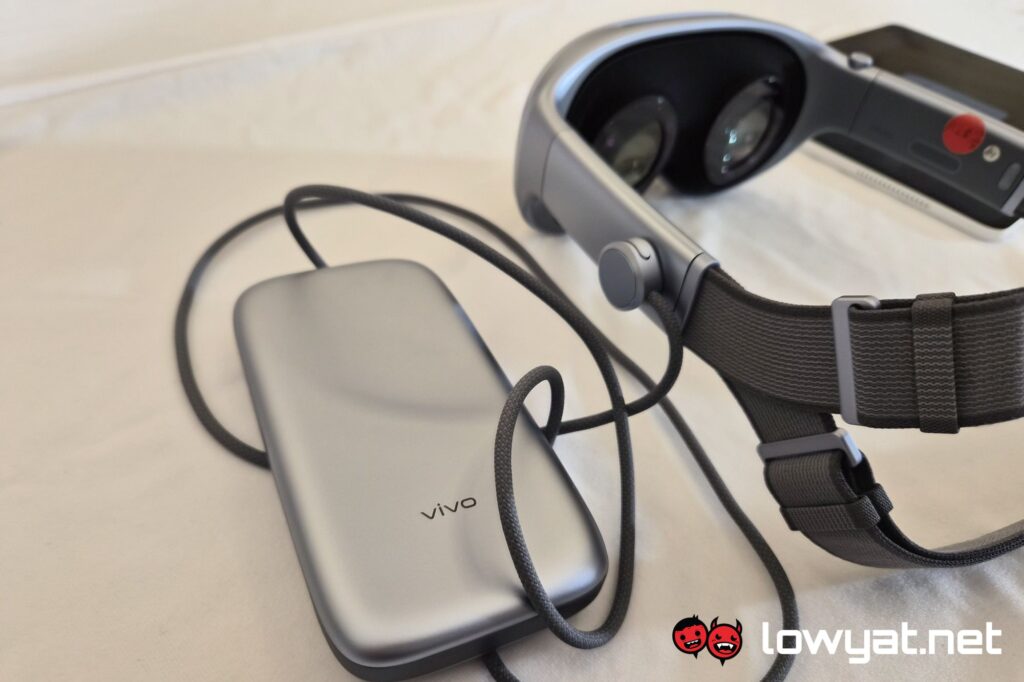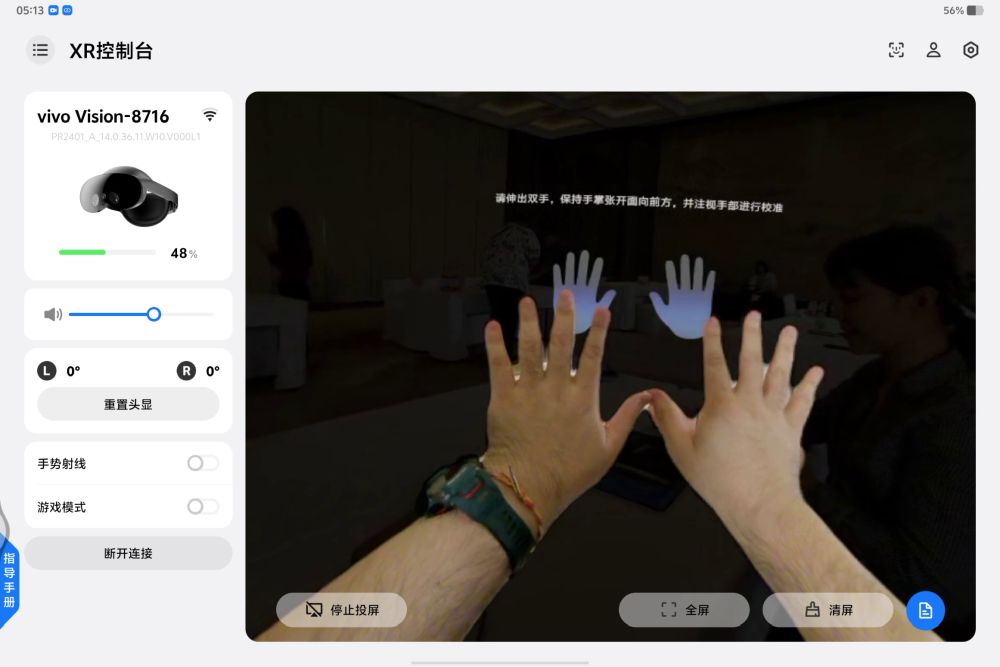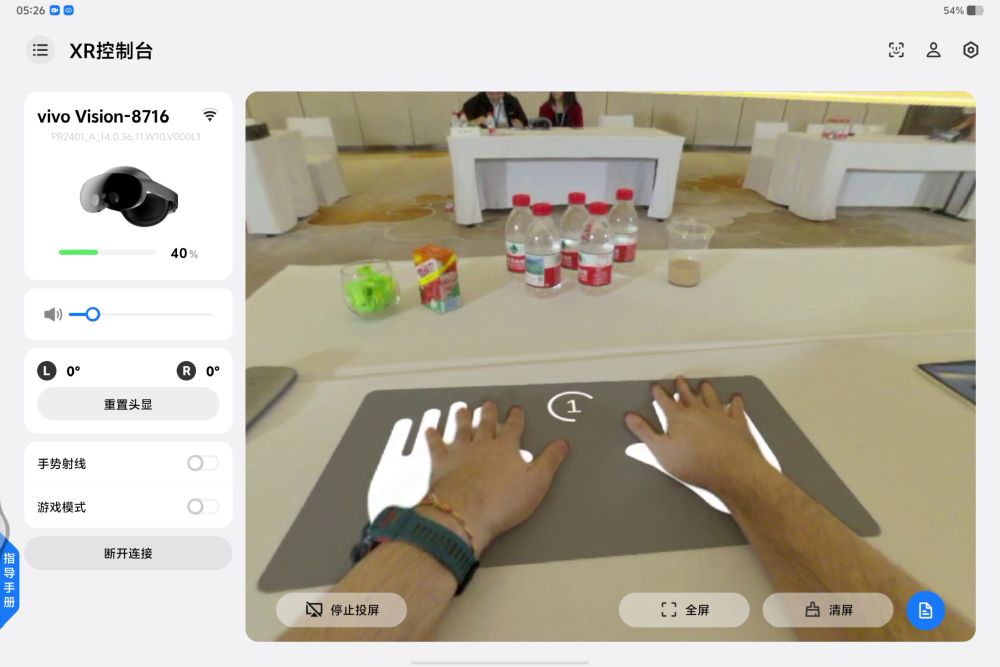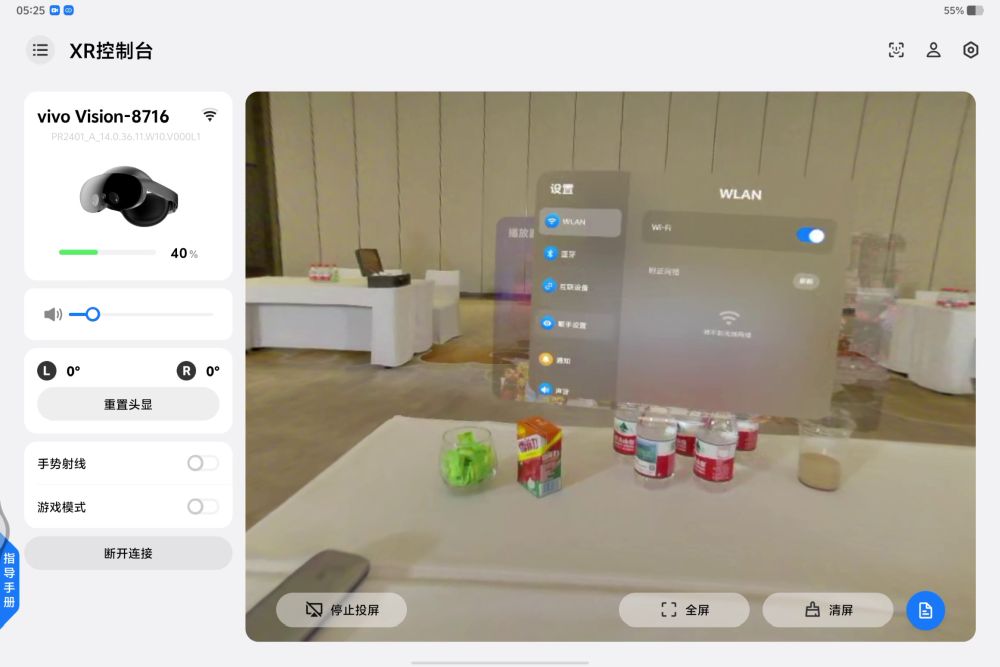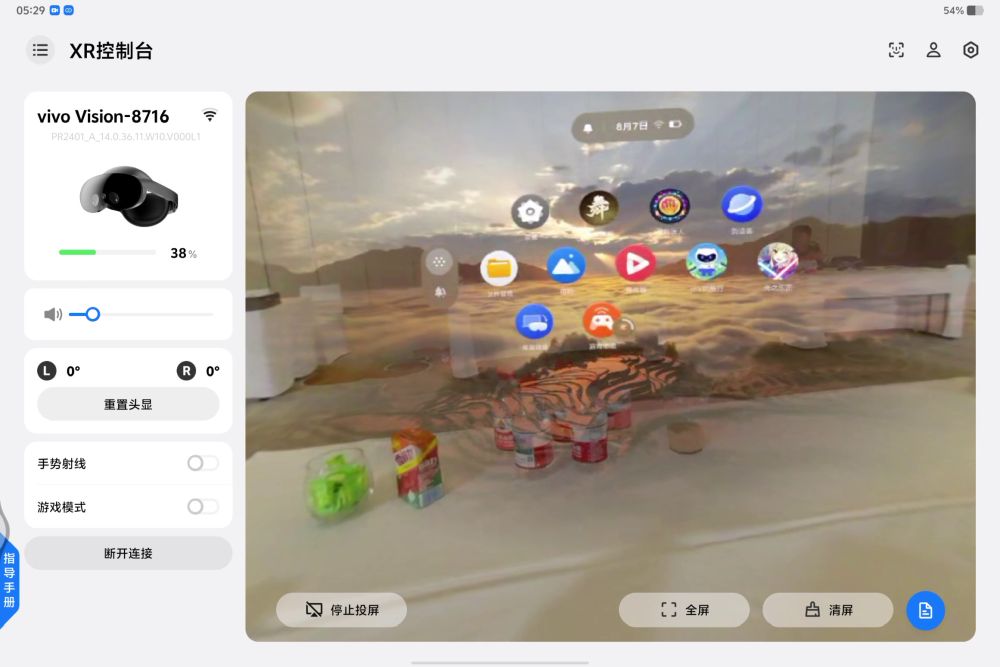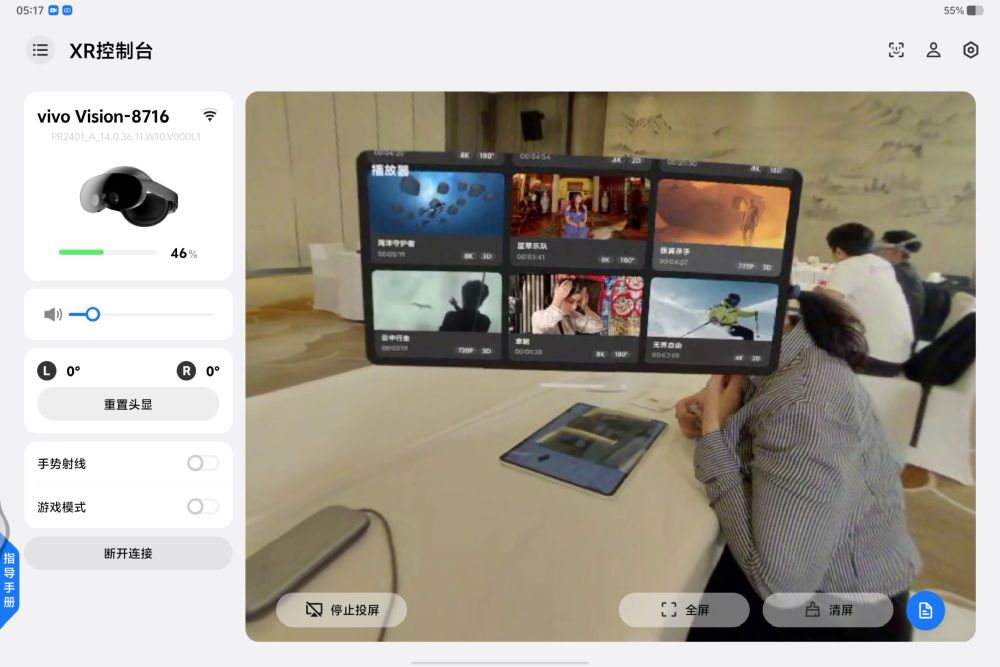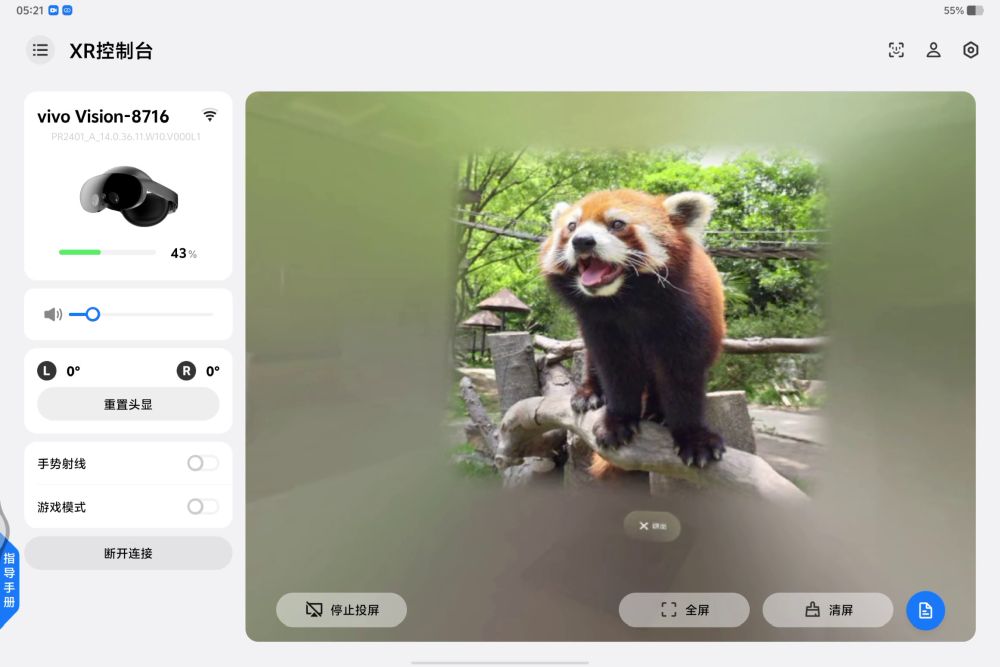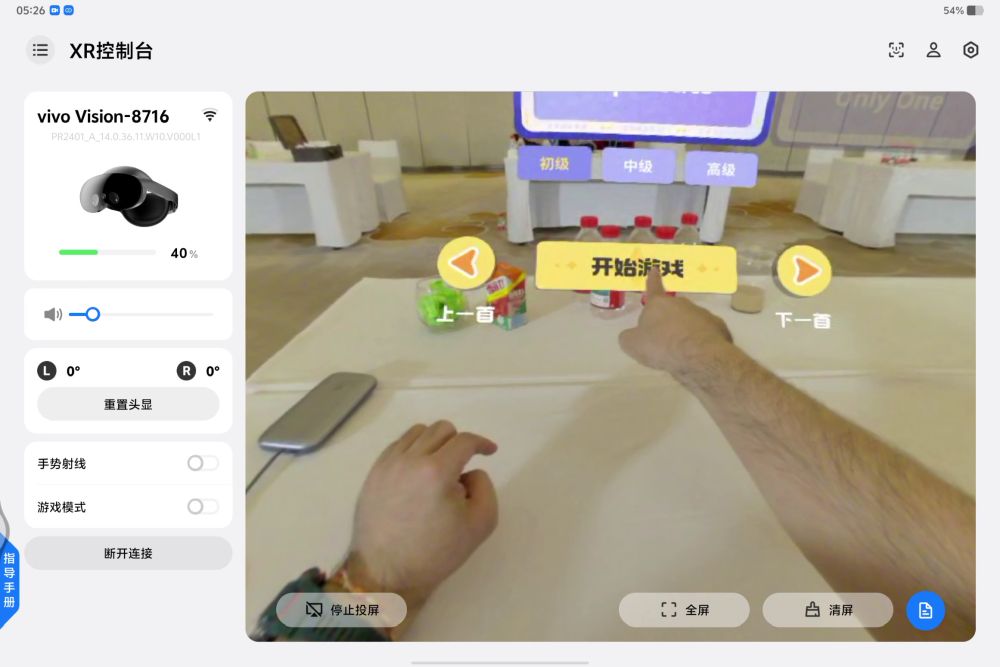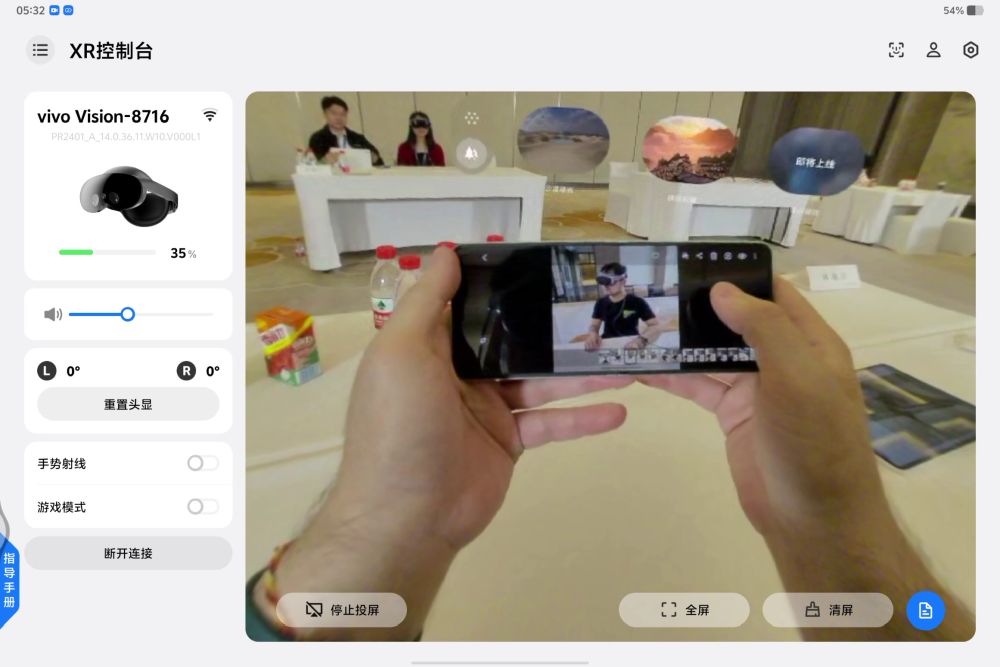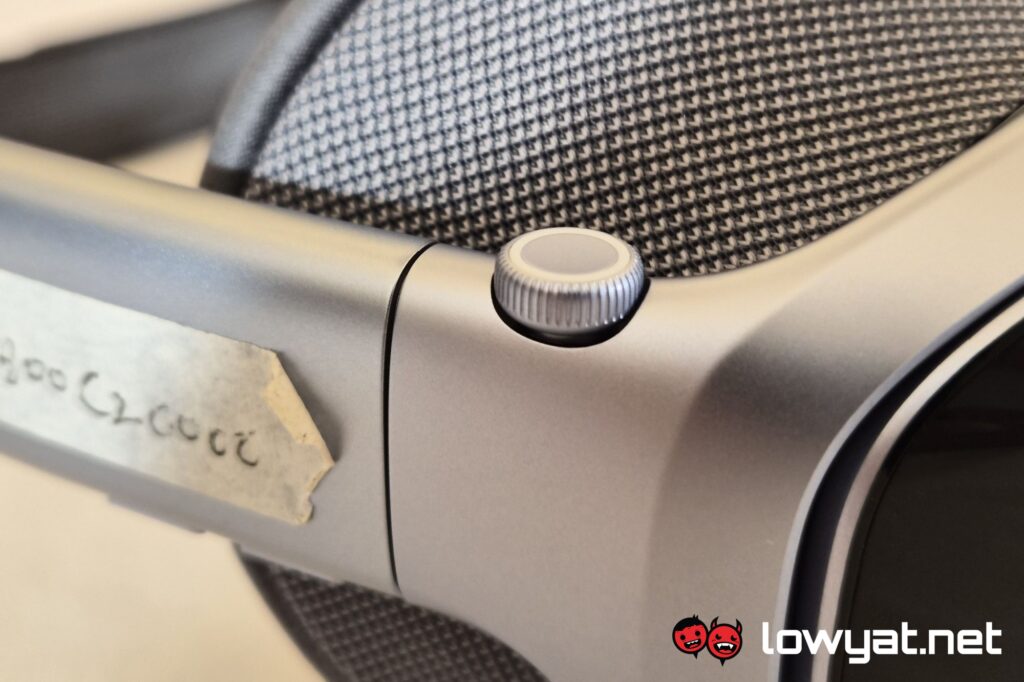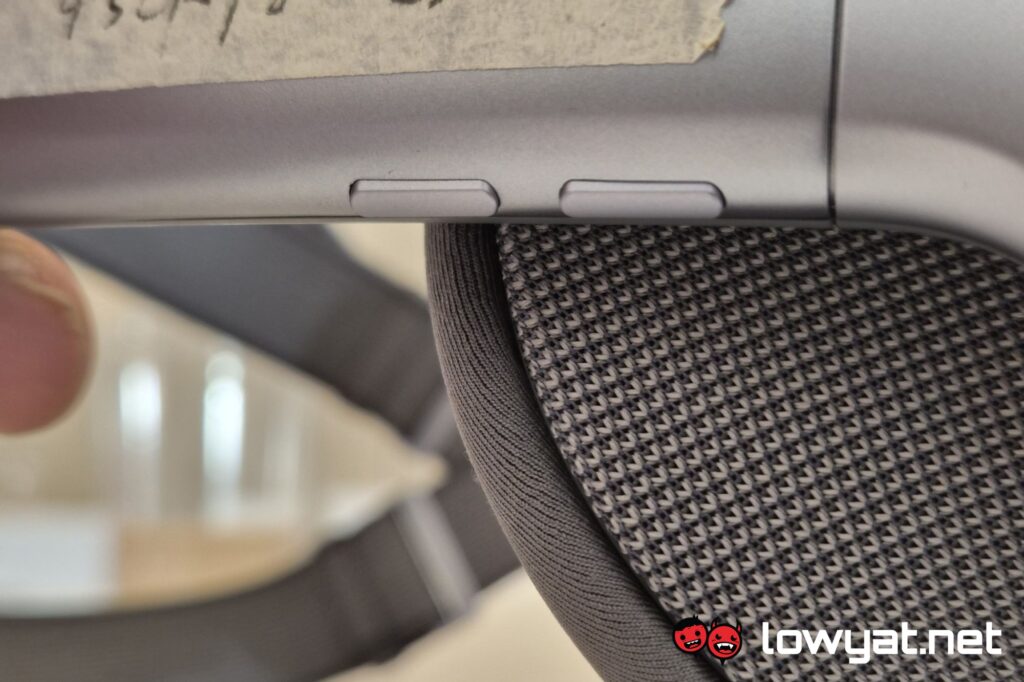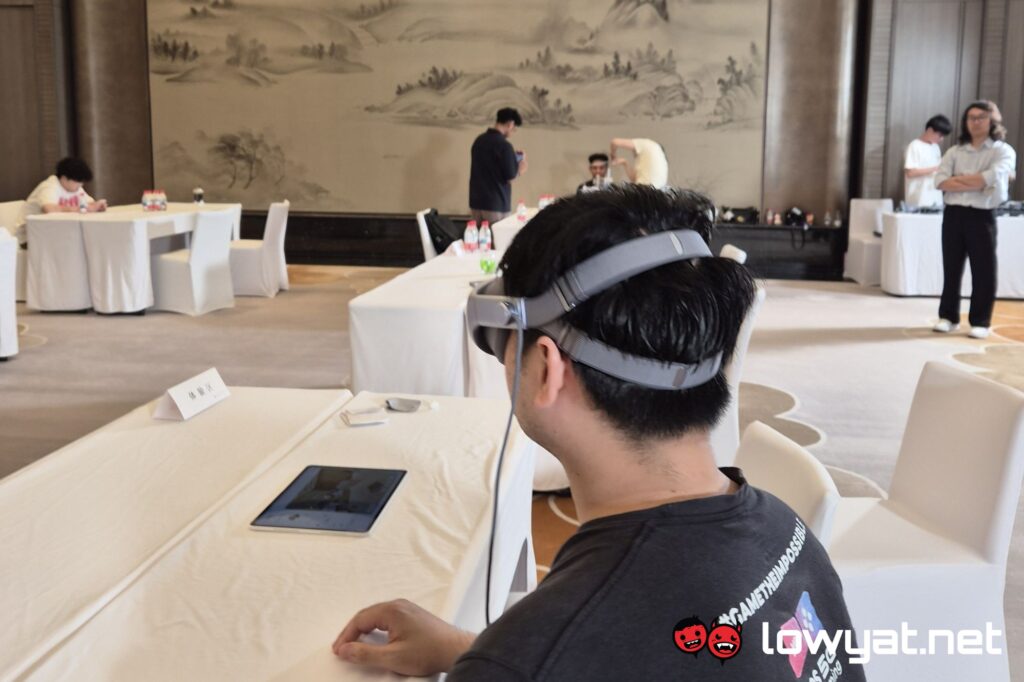vivo launched its Vision MR headset in China back in August. While it hasn’t made its way to our shores yet, we’ve been given a chance to preview it. The opportunity was included as part of our schedule in between vivo launching the X300 series and OriginOS 6.
Before we go any further I should mention two caveats to what you are about to read. One is that this is the Chinese version of the headset. Because of this, what you’ll experience for yourself in Malaysia may end up being a bit different.
Yes, this does mean that the vivo Vision will be making its way to Malaysia. A company rep claims that, when that happens, it will be the first Android-based MR headset in the country. And that is part of the second caveat, which we’ll get to later.
On the design front, if you’ve seen the initial reports of its launch in China, then for better or worse I have little else to show you. What I can show you is the way it looks with some parts removed. The most obvious one is the foam padding that sites between your face and the display of the headset.
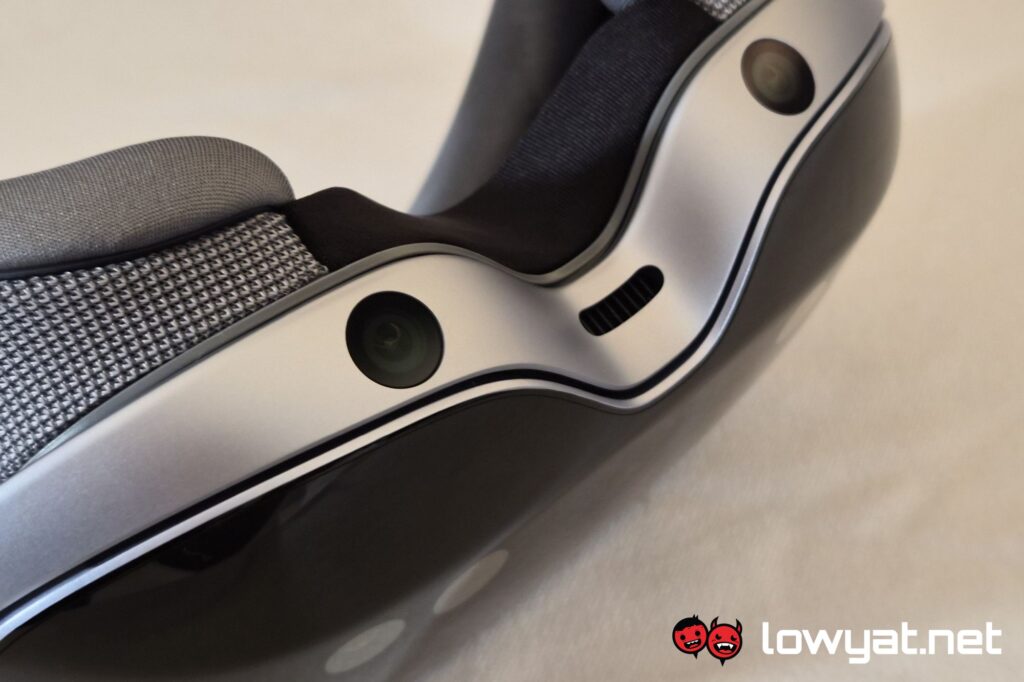
During our demo session, company employees used the cameras on the front of the vivo Vision to get a scan of a would be wearer’s face. This is then used to determine the size of the foam to use. The idea is impressive, though it ended up not choosing the right size for me, so it had to be swapped out another time.
You can naturally remove the band, but what is not shown in the official images is that removing the bit on the right exposes a USB-C port. The employee tells me that this is used to transfer files into the internal storage of the MR headset to be viewed through it. Though said employee did not share the storage capacity within.
On the other end is a proprietary power cable connector, that you can tether its own 1,900 mAh battery. Pretty small by today’s phone standards, and it only gives about 2.5 hours of use before it runs try. For what it’s worth, you can plug said power bank to another power bank, or indeed a wall plug, via USB-C, if you need more time with the vivo Vision.
Using it begins with letting it calibrate its hand and eye tracking, done by making you do a few exercised like you would a video game. Most of actually interacting simply requires that you do a pinching motion with your hand. This is tracked by cameras on the bottom side of the headset visor, much like the implementation of a certain bitten fruit brand.
This, too, wasn’t a completely wrinkle-less experience, for a few reasons. One is that, because I was sitting with a table in front, I imagine the headset failed to detect my doing the pinch because my hand was under said table. Other times, it was too far away, as I was resting my hands on my knees most of the time.
Things are a bit better when you have to interact with virtual things with your hands “directly”. But even then, I has issued with pressing buttons in front of me which I can only chalk up to depth perception issues.
The UI itself will probably be pretty familiar if you’ve interacted with any VR headset at all, never mind MR. You look at button, then pinch to select, or you pinch when there’s a scrolling screen and pull up or down. Then there’s the usual demonstration of its 3D chops, as well as transitioning from VR to AR modes. It’s all the same deal here.
Maybe it’s because it doesn’t have a built-in battery, but it feels comfortable enough to have on for the 20 or so minutes of my demo session. The band does have to be pretty tight to maintain visual focus though. And the built-in speakers can get pretty loud if you let it. Overall, there are the usual MR hiccups, but otherwise it’s favourably comparable to most other options out there.
Which brings me to the second caveat I mentioned. Should all this sound good and you want a more affordable, Android alternative to the Apple Vision Pro, this isn’t it. Not because it is expensive, but because the company isn’t putting a price tag on it. That’s right, the vivo Vision is not a product you can buy. A company rep tells me that it’s the same story in China, where it launched months ago.
So when it does come to Malaysia – and it will, the company rep assures me – it will be the first Android-based MR headset in the country, but not one you can own. As for when this will happen, it’s sometime between now and before the year ends. And when it does, you’ll only be able to try it out at selected concept stores. Which is probably an ironic word to use as the company itself has not selected which concept stores those will be, at least at the time of writing.

